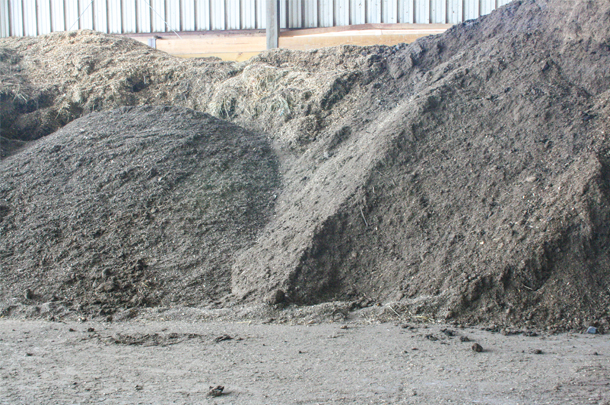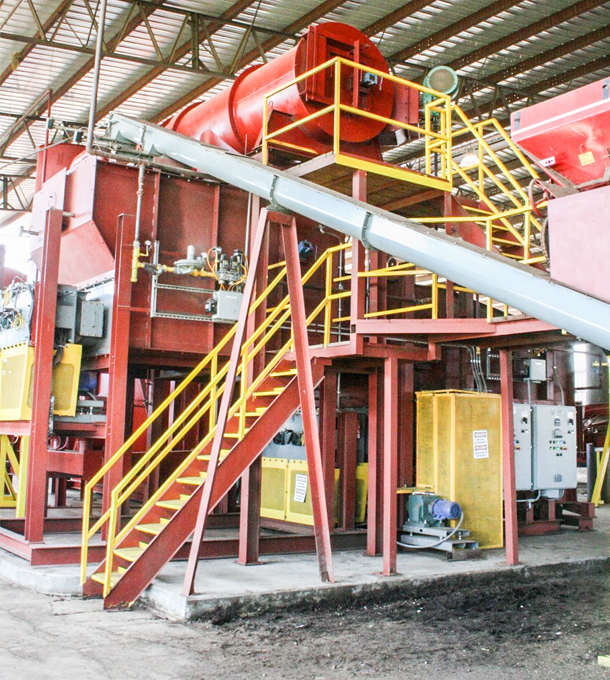Not wanting to depend on others to help dispose of the farm’s manure, the Ohio Heifer Center in South Charleston, Ohio, decided to set up a facility to recycle the manure for use directly on-farm. In doing so, it has saved hundreds of thousands of dollars in bedding and is working to market a novel byproduct.
The farm was built in the late 1960s for the purpose of feeding out 9,800 head of beef cattle. In more recent years, it has been purchased by Sexing Technologies and repurposed for raising heifers. It currently houses 4,500 dairy animals.
Those animals generate 40,000 tons of manure a year, and it is all processed in the manure barn in the center of the property. This facility was part of the tours offered by the North American Manure Expo in early August.

Since the animals are mostly youngstock, with the exception of a small milking herd, the manure is mostly dry at 60 to 70 percent moisture. A vacuum is used to clean the scrape alleys and haul the manure to the handling facility where it is stacked.
“We needed to find a way to handle the manure,” said Paul Detwiler, general manager, Ohio Heifer Center. “I didn’t want to depend on the neighbors to take the manure, so we invested in the technology and a facility that puts us in charge of it.”
The facility consists of a rotary drum dryer to evaporate the water from the manure to create a dry bedding product for the farm.
The dryer operates 24 hours a day for five days a week – Monday through Friday. They can process 10 tons of manure an hour and end up with 4 tons of dry bedding at 20 to 24 percent moisture.
The manure is in the dryer for 20 minutes and reaches temperatures of 720°F to kill any viruses or bacteria.

By creating a bedding product, the farm is able to reuse 70 percent of the manure produced on the farm. The other 30 percent is applied on land used to grow feed for the farm.
“The whole process was built to produce our own bedding,” Detwiler said. “We previously spent $800,000 a year on bedding.”
He figures the cost of production at $18 per ton. “I can make bedding much cheaper than I can buy anything,” he said.
The farm spends $6.80 per ton on natural gas for the dryer and the rest is for labor and capital expenses. There are six employees devoted to the manure barn.
To offset the cost of natural gas, a gasifier was built. This large oven introduces a controlled amount of oxygen to burn a portion of the dried manure at very high temperatures to produce carbon dioxide.

“[The gasifier] produces 40 percent more energy than needed to run the dryer. It’s an experiment that needs tweaking,” Detwiler said.
In addition to energy for the dryer, the gasifier produces a valuable biochar product, which is the mineral ash left from the manure. The farm is in the very early stages of developing a commercial opportunity for this product and meanwhile sprinkles the biochar in the bottom of cattle pens and stalls, where it acts like cat litter to absorb ammonia.
The facility is in its fourth year of production, and the only bedding purchased by the farm is some straw and sawdust for the young calves.
Milk cows are bedded once a day, while all other pens are bedded once a week. They use a skid loader with an asphalt grinder on the front to stir the bedding. “We can run it through any bedded pack and leave it fluffy as a pillow,” Detwiler said.
By drying the manure and using it as bedding and fuel on the farm, the Ohio Heifer Center has found a way to reduce its dependency on neighboring land and save on bedding costs. ![]()

-
Karen Lee
- Editor
- Progressive Dairyman
- Email Karen Lee
PHOTO 1: The manure facility at the Ohio Heifer Center has been operating for four years to process all of the manure produced on the farm.
PHOTO 2: Manure is dried and reused as bedding on the farm.
PHOTO 3: A rotary drum dryer processes 10 tons of manure an hour.
PHOTO 4: A gasifier uses oxygen to burn manure to produce energy for the manure dryer and biochar. Photos by Karen Lee.




